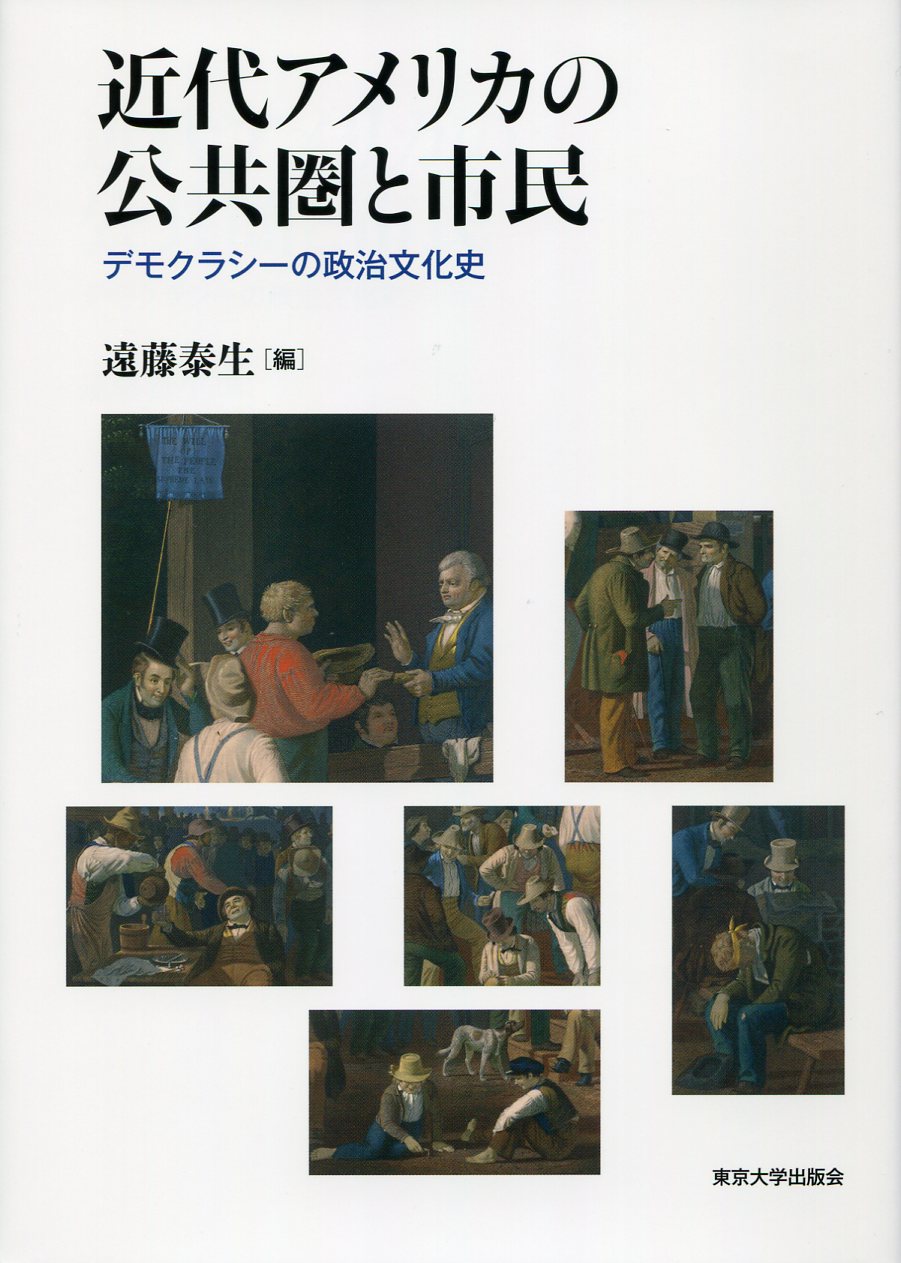
Title
The Center for Pacific and American Studies Collection Kindai America no Kokyoken to Shimin (The Public Sphere and Citizenry in the Early United States - The History of the Political Culture of Democracy)
Size
364 pages, A5 format
Language
Japanese
Released
March 29, 2017
ISBN
978-4-13-026153-1
Published by
University of Tokyo Press
Book Info
See Book Availability at Library
Japanese Page
This book is a collection of essays that examine the process by which a national political space formed in the early United States across the Thirteen Colonies vis-à-vis the idea of the public sphere advocated by the German social philosopher Jürgen Habermas. It is the result of an international joint research project at the Center for Pacific and American Studies at the University of Tokyo Graduate School of Arts and Sciences. The essays contained herein were contributed by thirteen American and Japanese researchers in distinct fields not only including history but, also, political science, constitutional studies, religious studies, literature, and more.
More than half a century has passed since Habermas’s publication of The Structural Transformation of the Public Sphere in 1962, and over the years, researchers in various fields have critically examined the formation of the public sphere in different countries. The end of the Cold War in 1989 and the subsequent fall of the former Communist regimes in Central and Eastern Europe reignited researcher interest in the public sphere by showing the world the potential and limits of the discursive space of democracy. Accordingly, research on the formation of the public sphere in East Asia and the Middle East has proliferated lately. The research in this book fits into this stream of research on the public sphere.
Meanwhile, these essays also highlight Japanese researchers’ remarkably low interest in the history of the formation of the public sphere in the early United States. A novel aspect of this book is that, by examining the reasons that this interest never blossomed among Japanese researchers, it reveals that a distinct character can be seen in American researchers’ work in this area.
Here is a more concrete explanation. To form a national commonwealth during its formative years, the United States was faced with the political tasks of achieving independence from England, the mother country of the Thirteen Colonies, and establishing a federal government. Consequently, while the public sphere in Europe demanded the monitoring of and opposition to the special authority of the King, the aristocracy, and the Church, the American public sphere required a system of government which would legitimize its rule as swiftly as possible as a new central authority representing the people. It is this uniquely American historical demand that gives rise to the particular characteristics of research in the United States, where the formation of the public sphere and the formation of nationalism were taken to mean roughly the same thing, and whose citizenry would later come to include people of widely differing ethnicities, languages, and religions after independence. As a result, the task of determining the character of the commonwealth’s constituents necessarily involved an intense political conflict over the criteria for inclusion in or exclusion from that central commonwealth. The essays in this book offer various perspectives on the formation and development of the American public sphere, which took place under these conditions.
This book consists of roughly three parts. Part One follows the course by which the members of Congress went from being a group of well-renowned statesmen to representatives of the American people. Part Two analyzes the process of organizing the citizenry by their outward appearance—race, gender, and ethnicity. Part Three deduces the process of cultivating the character of the citizenry, which was attempted through newspapers, novels, prints of urban panoramas, and other kinds of media. Through these three parts, the book illustrates the formation of the American public sphere.
(Written by Yasuo Endo, Professor, Graduate School of Arts and Sciences / 2018)



 Find a book
Find a book

